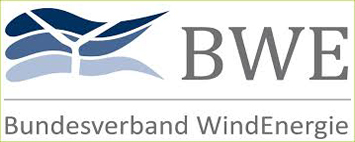Business and Market Modelling
Business Forecasting & Market Modelling is a crucial part for the overall economic viability of a wind power investment.
Business and Market Modelling: Understanding the key market drivers of the wind power business.
To undertake an efficient key market analysis and develop optimal strategic planning models for the wind energy industry it requires a plethora of
a broad range of data and resources. Diverse economic and market logics should be carefully and systematically combined for a holistic Business
and Market Modelling approach.
There are several emerging business models that are effective in the commercialisation and integration of technological and technical valuation platforms to evaluate wind power business viability. Business Forecasting & Market Modelling strongly depend on the accuracy and precision of the input parameters and last but not least, on the ability to identify potential weaknesses and drawbacks.
The increasing transparency and accountability of wind power investors and developers, including local communities investments, together with the modern complexity, penetration and significance of ITC (Information and Communications Technology), for even very small investment nowadays, has tended to heighten demand for process improvement and quality assurance everywhere. WPEA aims to improve business performance for renewable energy investments located in environmentally protected areas and with limited accessibility both onshore and offshore, by optimising the efficiency of the synergistic operations and processes. Business Process Modelling techniques are concerned with 'mapping' and 'workflow' to enable understanding, analysis and positive change.
| |
| | | |
|---|---|---|---|---|
| Project brainstorming and initial concepts, ideas, structures, aims, etc | | | | |
| Gathering and identifying all elements, especially causal and hidden factors | | | | |
| Scheduling and timescales | | | | |
| Identifying and sequencing parallel and interdependent activities and stages | | | | |
| Financials - costings, budgets, revenues, profits, variances, etc | | | | |
| Monitoring, forecasting, reporting | | | | |
| Troubleshooting, problem identification, diagnosis and solutions | | | | |
| 'Snapshot' or 'map' overview - non-sequential, non-scheduled | | | | |
| Format for communications, presentations, updates, progress reports, etc | | | | |
”Do we manage the work effectively?”
Our Business and Market Modelling analysis could help developers and investors to address today’s most common business concerns while preparing for success in the near future with a holistic, cross-functional view of the wind power market.
- The first step is to develop an efficient and clear 'mapping' and 'workflow' picture to enable understanding, analysis and positive change.
- Describe purpose, aims and deliverables.
- State parameters (timescales, budgets, range, scope, territory, authority).
- State people involved and the way the team will work (frequency of meetings, decision-making process).
- Establish 'break-points' at which to review and check progress, and how progress and results will be measured.
Developers: ”Are we competitive?”
- Customer understanding
- Competitiveness of our products and services
- Markets attractiveness
- Prioritizing sales efforts
Customer: ”Does it generate cash?”
- Evaluate if the investment will live up to the required cash flow and return on invested capital.
- Evaluate the risk profile
- Evaluate different supplier offerings
- Negotiate terms of conditions with the bank to get financing
- Create a basis for follow-up on the investment (20 year+)s
Financiers: ”Is it bankable?”
- Debt sizing and structure according to the free cash flow available
- Risk evaluation of the debt by sensitivity analysis
- Risk evaluation of the debt by a project due-dilligence proven track records Comprehensive service contracts, twenty-four-seven monitoring
Multiple purpose model
WPEA Wind power modelling is used for Business Modelling and Market assessments on all levels for a holistic, cross functional approach with emphasis on projects located in environmentally protected areas.- Macro level
- Industry level
- Market level
- Power plant level
- Energy political context
- Competitive context
- Market attractiveness
- Specific site and customer analysis
Join us to discover more!


 The aim of every investment case analysis is to assess
project viability, project uncertainty and to ensure that
all relevant factors have been considered prior to final
investment decision (FID). Such analyses provide decision
makers with a better understanding of wind farm economics,
profit opportunities and the risks of wind investments.…
The aim of every investment case analysis is to assess
project viability, project uncertainty and to ensure that
all relevant factors have been considered prior to final
investment decision (FID). Such analyses provide decision
makers with a better understanding of wind farm economics,
profit opportunities and the risks of wind investments.…  LOOKING BACK Data & statistics Operational results
Markets onshore & offshore Service survey Law
LOOKING AHEAD Standards & guidelines Research
Technology, trends and turbine overview…
LOOKING BACK Data & statistics Operational results
Markets onshore & offshore Service survey Law
LOOKING AHEAD Standards & guidelines Research
Technology, trends and turbine overview… 